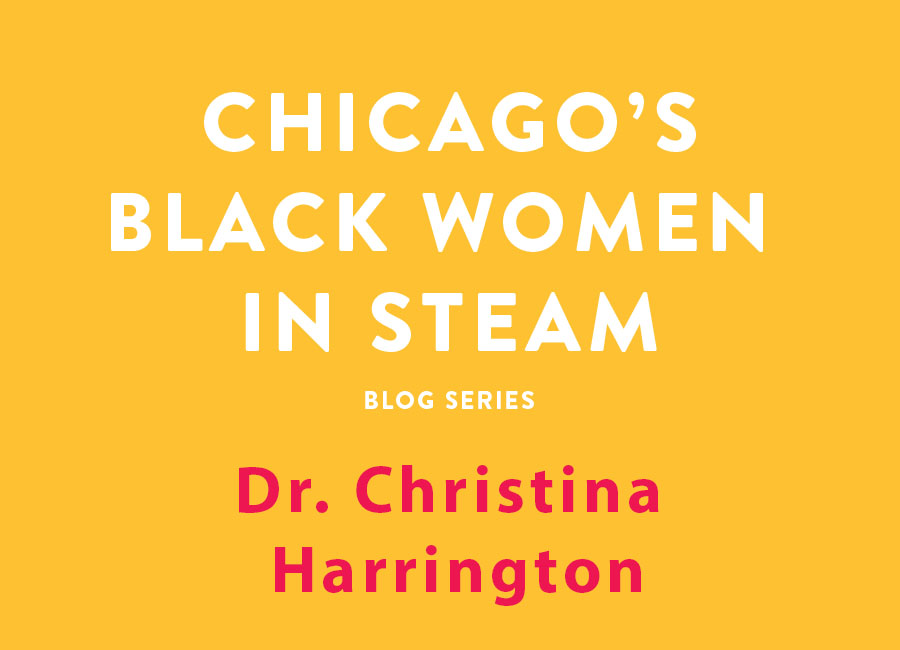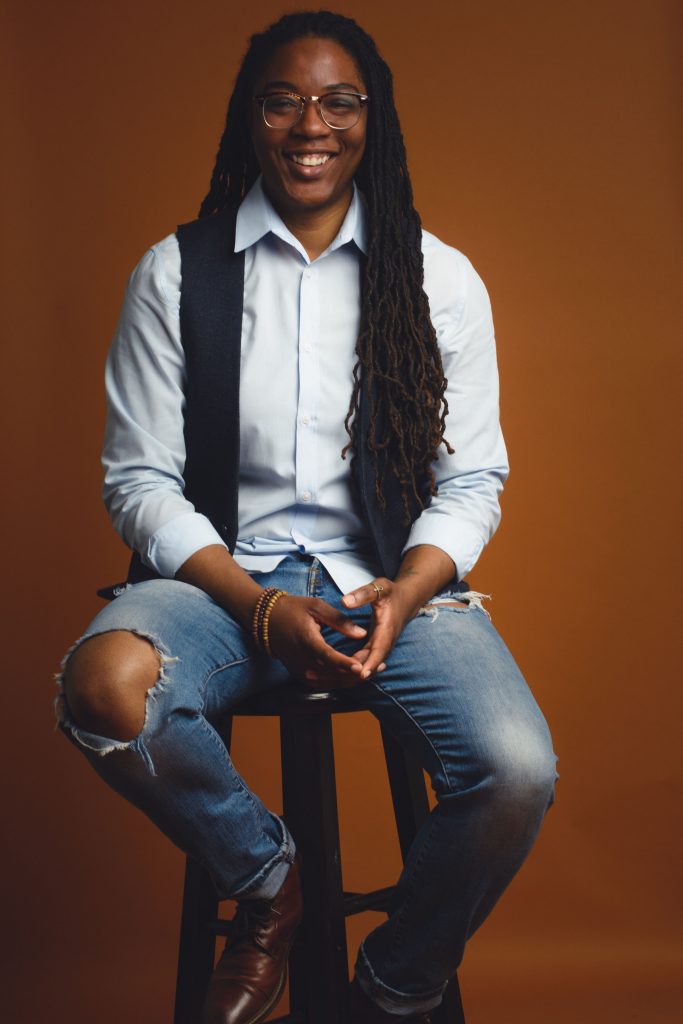Chicago’s Black Women in STEAM Series: Meet Christina

“Chicago’s Black Women in STEAM” is a series on The Adler ’Scope that highlights the awesome women of Chicago who are doing amazing things in science, technology, engineering, art, and math fields here in our own community. Meet women of varying ages, backgrounds, and interests and learn their unique stories.
Christina Harrington
Doctor of Philosophy (PhD), Design
Postdoctoral Fellow at Northwestern University

What first sparked your interest in design?
It’s actually an interesting story. I went to college to become an electrical engineer because I grew up wanting to design electronics like my uncle who was an engineer. I was always a fan of the old school sci-fi shows and books that had the cool tech gadgets. I loved tinkering and coming up with ideas and was told that with my aptitude in math and science, I’d be a great engineer.
Midway through undergrad though I realized I hated engineering but I felt like I had to stick it out because my family was rooting for me. A couple of my guy friends were taking this Industrial Design studio course our junior year and, out of curiosity, I followed them to class one day and completely fell in love with it—the atmosphere of the studio and the ways the professors were pushing people to be creative. I took a Design Research class under Professor Martha Sullivan and I realized that I loved the aspect of considering how people interact with products. Designers get to explore the problem area that leads to a solution where I felt that as an engineer, I was just architecting solutions with no context to the phenomena that surrounds the problem. I wanted the work I did to ensure people’s needs were considered and their voices were prioritized: being in the field of design puts me closest to making that impact.
You were once a Design Intern at Apple’s headquarters in Cupertino (so cool!). What was it like working with such a renowned company?
Apple is the mecca when it comes to design. Nowhere else will you find a group of folks more energetic and passionate about the most minute details. Everything was important, from the colors of font to the radius of product edges. It was a great place to ground your individual design aesthetic. My work environment was of course fun but also consistently motivating. A lot of Apple designers and engineers had big dreams and were finding ways to bring them to life, and it made you want to dream for yourself. The team dynamic—gave me friends for life, a lot of folks I still keep up with to this day. I loved it and miss it sometimes.
Can you tell us more about the work you’re doing at Northwestern University?
I’m a research fellow in the Inclusive Technology Lab in the Communication Studies department. My research focuses on designing technologies to support health equity among groups that are typically neglected. I’ve been working with a group of Black elders in the Washington Park area of Chicago, which is one of the most medically underserved areas in the US. My work combines the areas of human-computer interaction and health through community-based participatory design. I engage local community residents in all aspects of the design process from defining the research agenda to co-designing solutions alongside them. I’m exploring technology interactions both at the individual and community level and whether or not technology is a realistic solution to health challenges in lower-income communities. My work also explores how identity frames the ways people think about technology, the ways they use it, and ultimately their acceptance of it into their everyday lives. Alongside the technology aspect I’m exploring the design methods we use to engage with underserved populations and the ways to move towards more equitable design methods.
Since you research the intersection of design and human-computer interaction (HCI), what do you think are some of the challenges that arise from trying to merge the two?
I think both design and HCI are concerned with advancing humanity in a way that can be cool but scary if we’re not careful. I’m a huge fan of Afrofuturism in speculative fiction, a lot of which tells these cool stories of alternative futures where technology can extend life, replace human work, or transform socialization. So, I love how the nexus of design and HCI are essentially responsible for bringing about those futures and pushing the possibilities of interactive experiences. A challenge is that (without ethics) we run the risk of creating technology that further marginalizes certain communities or even targets them. A lot of the technologies emerging, such as artificial intelligence and facial recognition, don’t appropriately respond to Black and Brown folks right now, and in some instances have been found to disproportionately criminalize us. And if you look at who is designing a lot of these systems, you’ll realize how things like algorithmic bias occur and can be considered dangerous to certain communities. That is where technology can get scary and this field becomes just as much about ethics and responsibility as it is about innovation and creativity.
What advice would you give to young girls of color who are interested in pursuing careers in STEAM?
Don’t be afraid to dream and dream big. We’re seeing more and more Black and Brown women making their mark in STEAM across academia and industry. There’s no reason to believe you can’t start the company you have an idea for, become the first, or even lead the field in your particular area of expertise. I’d tell them to look at those of us out here now as possibility models and don’t be afraid to surpass what we’ve done.
Where do you hope to be career-wise in 10-20 years?
Million-dollar question. Doing research but maybe on a different scale. I like that academia allows me to deep-dive in an area and spend months to years there. It’s a great place for knowledge-generation without the pressures of being driven by a particular product. Ultimately, I want to get to a point where my work includes impacting policy in the realm of public health and digital access. I’m not sure if that looks like a research institute or sitting on advisory boards. I think publishing and presenting will always be a part of it because that is the currency in the world of research and advancement in tech and design. Part of the beauty of this field is that the possibilities as my career progresses are super fluid and open.






